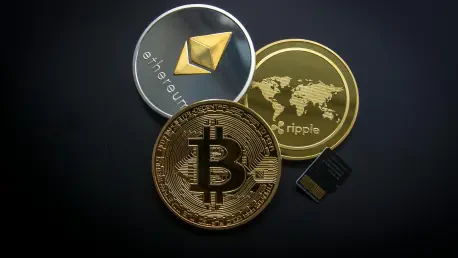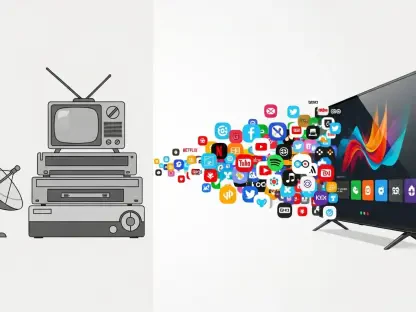In today’s ever-evolving telecommunications landscape, innovators like Vladislav Zaimov are pushing boundaries by integrating novel methods into traditional frameworks. Zaimov, with his robust background in telecommunications and network risk management, sheds light on Helium’s initiatives to modernize Wi-Fi networks and create synergetic partnerships. This interview dives into the intricacies of Helium’s strategies, partnerships, and their long-term goals.
Can you explain what Helium is currently doing to leverage its Wi-Fi network and how it plans to involve T-Mobile customers?
Helium is working on expanding its Wi-Fi network by utilizing a decentralized approach where individual operators set up hotspots and earn cryptocurrency in return. By tapping into this network, T-Mobile customers can potentially access Wi-Fi in areas where cellular coverage might be limited, all through a third-party arrangement that involves innovative technology and infrastructure.
Could you clarify the nature of the partnership agreement that allows T-Mobile subscribers to connect to Helium’s network?
The partnership involves a third-party wireless company that essentially bridges T-Mobile subscribers with Helium’s network. This agreement enables T-Mobile users to access Helium’s hotspots without a direct offload contract between Helium and T-Mobile, highlighting a unique way of facilitating user connections.
What are the primary reasons T-Mobile currently does not have a formal offload agreement with Helium?
One of the main reasons could be the complexity of integrating two large-scale networks in a way that ensures consistent quality and security. There may also be strategic reasons from T-Mobile’s side, assessing the benefits and implications of formalizing such an offload agreement in their broader network strategy.
How does the third-party wireless company mentioned factor into the partnership between Helium and T-Mobile subscribers?
This third-party entity acts as a go-between, enabling the connection of T-Mobile subscribers to Helium’s Wi-Fi network. It’s a strategic setup that benefits both Helium by increasing its network reach and T-Mobile users by providing them with additional connectivity options in congested areas.
Can you elaborate on the agreement Helium has with AT&T about roaming onto Wi-Fi hotspots?
The agreement with AT&T is a straightforward arrangement where AT&T’s mobile customers can rove onto Wi-Fi hotspots managed by Helium and other like-minded DePIN players. In return, these Wi-Fi hotspot operators are rewarded in cryptocurrency, merging digital incentives with physical infrastructure use.
What are the benefits for Wi-Fi hotspot operators in cooperating with DePIN players like Helium, Xnet, and Karrier One?
Operators benefit largely from earning cryptocurrency rewards, which provide financial incentives while supporting decentralized network growth. It’s a model that attracts individuals by allowing them to monetize their internet service and, at the same time, contribute to a larger network ecosystem.
How has the DePIN model evolved from its initial conception of decentralized wireless (DeWi)?
The DePIN model represents an evolution from merely connecting devices through decentralized networks to creating a robust infrastructure that rewards participants. This model has broadened its scope from essential wireless connectivity to include diverse, large-scale commercial operations.
Why did Helium transition from building a cellular 4G network to focusing on a Wi-Fi network?
By shifting to a Wi-Fi network, Helium circumvents the technical complexities inherent in cellular networks, such as spectrum management and more stringent regulatory requirements. Wi-Fi networks allow for a more scalable and cost-effective deployment, leveraging existing infrastructures.
How does Helium plan to tackle the technical complexities it faced while developing the 4G network?
Helium aims to address these complexities by simplifying their deployment strategy, focusing more on community and user-driven network construction, which avoids the intricacies of direct cellular infrastructures and utilizes blockchain technology for streamlined operations and rewards.
In what ways is the current cellular offloading onto Wi-Fi different from previous efforts by other companies like AT&T?
While earlier initiatives by companies like AT&T focused on transitioning data from cellular to Wi-Fi primarily through owned hotspots, Helium’s approach is more decentralized. It incentivizes a wide array of individual operators and does not rely solely on major network infrastructure, fostering inclusivity and expansion.
How is Helium approaching its mobile virtual network operator (MVNO) strategy, particularly with the Helium Mobile service?
Helium Mobile’s strategy hinges on offering competitive data packages underpinned by an open MVNO model. It leverages the existing T-Mobile network, accompanied by Helium’s community-driven data coverage, providing customers both accessibility and affordability.
What kind of growth has Helium Mobile seen since launching the “Zero Plan”?
The “Zero Plan” has seen substantial traction, with over 250,000 customer sign-ups. This growth underscores the popularity of free data offerings, demonstrating Helium’s ability to attract users through compelling initial service propositions that entice further engagement.
What might be the potential reasons for customers to switch from Helium Mobile’s free plan to its paid services, or to other providers?
Customers could be swayed to upgrade for enhanced features, consistent service quality, or greater data allotments. Others might switch to explore new offers or due to preferences for more established network providers with widespread coverage.
How does Helium’s strategy compare with other freemium business models in terms of customer conversion?
Helium’s strategy is akin to other freemium models by offering an enticing free product and aiming to convert users by providing valuable extras in the paid tiers. This model banks on customer satisfaction at the entry level to encourage elevated investments.
How has Helium’s background in cryptocurrency influenced its business strategies and decisions?
Cryptocurrency is at the heart of Helium’s innovative approach, shaping its reward systems and financial models. By integrating digital currencies, Helium empowers its decentralized network model financially, creating dynamic participatory economic incentives.
What is your forecast for DePIN and similar decentralized infrastructure strategies in telecommunications?
DePIN models could become a prominent feature in telecommunications, as they democratize infrastructure assembly, lower entry barriers, and offer sustainable growth through incentives. This approach is likely to inspire further innovations and rethink traditional telecom frameworks.









